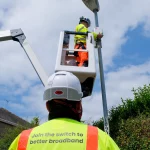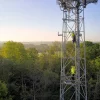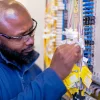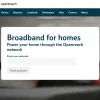Three UK Commit £2bn to Commercial 5G Broadband Rollout in 2019
Mobile operator Three UK has announced that they’ve committed £2bn to support the start of their commercial roll-out of future 5G mobile and ultrafast “home broadband” technology from the second half of 2019, which will put them in a position to challenge arch rival EE (BT) for an early lead.
Until today EE was the only operator to have firmly committed to start the commercial deployment of 5G services from the end of 2019 (here), although initially this would have to be quite a limited roll-out since much of the necessary radio spectrum and hardware isn’t expected be completely ready until 2020. Similarly most of the early trials have been more focused on fixed wireless broadband ISP connectivity than mobile (Smartphone etc.) services.
However Three UK, which tends to own less 3G and 4G spectrum than their rivals, has long recognised that they may be better positioned to compete in future 5G services. Overall the operator now has to a total of about 144MHz (frequency) across several 5G friendly mobile bands (e.g. 3.4-3.6GHz and a bit of 3.9GHz, 28GHz and 40GHz).
Advertisement
Much of this spectrum comes from their £250m purchase of UK Broadband Ltd. (Relish Wireless) in 2017 (here) and they recently spent £164m to grab a meagre 20MHz slice of the 3.4GHz band in Ofcom’s auction (here), while most of their rivals scooped up bigger 40MHz and 50MHz slices. In the future we expect they’ll also grab a slice of 700MHz and some other 5G targeted bands.
All of this is important since Three UK claims that their customers gobble “3.5x more data per month than the industry average” and these should be well served by all of the 5G spectrum that the operator now holds. Meanwhile they’re investing £2bn+ on a major upgrade to prepare their network, which has already achieved quite a lot and will also benefit their existing 4G network.
As part of its network upgrade the telecoms operator has:
* Signed an agreement for the rollout of new cell site technology to prepare major urban areas for the rollout of 5G devices, as well as enhance the 4G experience
* Built a super high-capacity dark fibre network, which connects 20 new, energy efficient and highly secure data centres.
* Deployed a world-first – a 5G-ready, fully integrated cloud native core network in the new data centres, which at launch will have an initial capacity of 1.2TB/s, a three-fold increase from today’s capacity, and can scale further, cost effectively and quickly.
* Rolled out carrier aggregation technology on 2,500 sites in busiest areas, improving speeds for customers.
As a result the operator has today announced that the “first commercial quantities of 5G smartphone and home broadband devices are expected to be available by H2 2019.”
Dave Dyson, CEO of Three UK, said:
“We have always led on mobile data and 5G is another game-changer. Also described as wireless fibre, 5G delivers a huge increase in capacity together with ultra-low latency. It opens up new possibilities in home broadband and industrial applications, as well as being able to support the rapid growth in mobile data usage.
This is a major investment into the UK’s digital infrastructure. UK consumers have an insatiable appetite for data and 5G unlocks significant capability to meet that demand.
We have been planning our approach to 5G for many years and we are well positioned to lead on this next generation of technology. These investments are the latest in a series of important building blocks to deliver the best end to end data experience for our customers.”
The mobile operator has previously made no secret of their desire to adopt 5G for the deployment of a new fixed wireless home “ultrafast broadband” service across the United Kingdom, which they believe would complement their more familiar services for mobile consumers.
Advertisement
As a technology 5G is certainly capable of multi-Gigabit speeds (the ITU standard supports 20Gbps but we won’t see that for a long time) and 5ms or lower latency times, so it’s well positioned to deliver such services and potentially to even challenge the established fixed line market.
However, it will take several years to grow 5G’s coverage and much will depend upon whether operators, like Three, can support it with enough capacity to meet the expectations. This will be necessary because any serious challenge to the established fixed line market would require both lots of spectrum and affordable “unlimited” data allowances.
Likewise only urban areas are likely to benefit from the kind of dense network deployment and multiple higher frequency bands that will make ultrafast 5G home broadband speeds truly viable, while rural areas would be well advised not to get their hopes up (most of those will also be waiting a fair few years before 5G arrives).
As usual it’s best to take the 5G hype train with a pinch of salt until we start to see the first services becoming available to ordinary folk. We further suspect that the initial packages won’t be particularly cheap.
Advertisement
Mark is a professional technology writer, IT consultant and computer engineer from Dorset (England), he also founded ISPreview in 1999 and enjoys analysing the latest telecoms and broadband developments. Find me on X (Twitter), Mastodon, Facebook, BlueSky, Threads.net and Linkedin.
« Ofcom Warns UK Phone Providers to Stop Obstructing Number Ports
















































Comments are closed